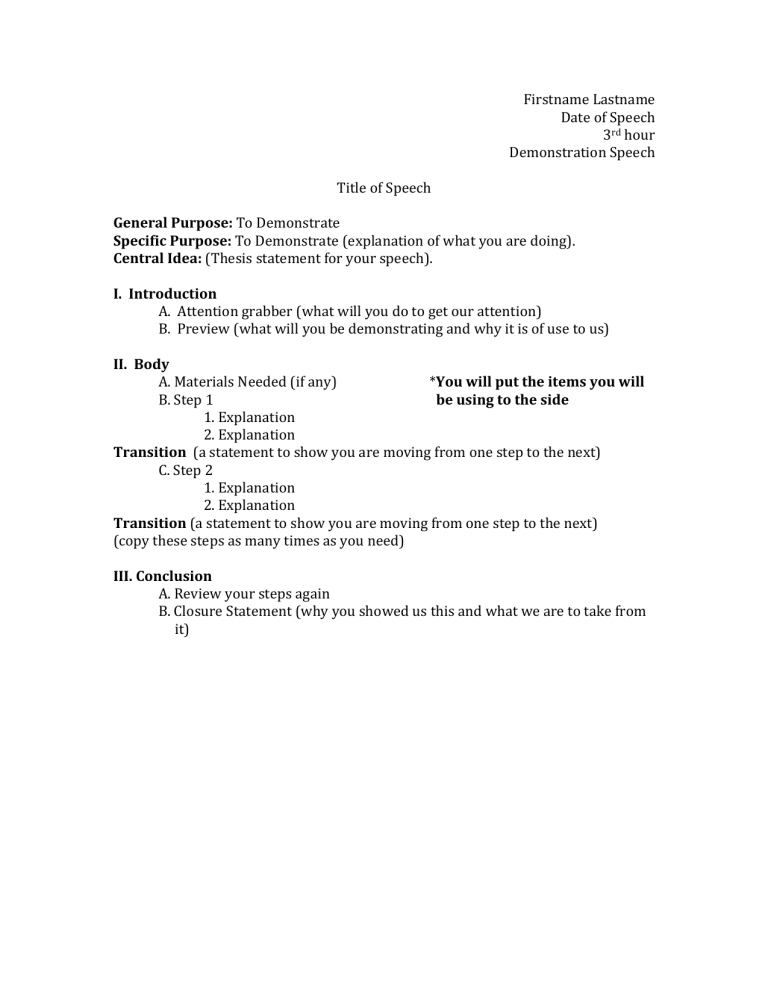

The triadic relation between concepts, percepts and affects offer us clues to what juggling, unicycling or dancing mean to learners (concepts), what learners pay attention to while practising (percepts), and what gets them moving (affects). This is what we designate genuine learning.
Juggling demonstration speech central idea how to#
Findings indicate how students pass through interpretative illusions until some of them grasp difference in itself in what could be called its immanent differentiation of the actual, i.e., they learn how to juggle, unicycle or dance. In these interventions, school and university students are encouraged to explore, and learn, juggling, unicycling and dancing. We use material generated from pedagogical interventions comprising of exploration of kinescapes. We borrowed some ideas formulated by Deleuze (and Guattari), which have been further developed by educational researchers, about “an apprenticeship in signs” based on “a pedagogy of the concept,” to analyse situations where students explore new movements. Methodologically, the article falls somewhere in between theoretical exposition and presentation of original empirical research, i.e., a “theoreticoempirical” exposition. The purpose of the article is to outline how Deleuzian concepts, notably the notions of apprenticeship in signs based on a pedagogy of the concept, can stimulate thinking and understanding of movement learning, and provide insights about pedagogical implications in various movement educational settings. 3Department of Health Sciences, Örebro University, Örebro, Sweden.2Department of Teacher Education, Dalarna University, Falun, Sweden.1Department of Movement, Culture and Society, The Swedish School of Sport and Health Sciences, Stockholm, Sweden.Also going into history of juggling and why juggling is important to you personally may help.Håkan Larsson 1 *, Gunn Nyberg 2 and Dean Barker 3

There is a lot of deep-rooted mathematics that has been published regarding juggling and I think that can stir up an adults interest (could also mention Claude Shannon, Ron Graham, etc.) in the topic more so than just basic presentation/getting adults involved.

I would add something about the history of juggling or the mathematics behind juggling. I feel as though most adults don't appreciate juggling as much as children, some do, but others simply write it off etc. Another thing I would personally add though is something that adults can take away from your presentation. If you're presenting to a larger proportion of adults then I would also do the same thing as having explanation of different juggling props as well as having adults try to juggle three balls. Not saying don't do it, but I think kids probably like more of a "show" than a lecture. (you could possibly do history of juggling or math behind juggling, but don't go into to much depth IMO since kids may become bored). Children are more naturally intrigued by juggling, it doesn't take to much to get the spark going in their mind. If it's children then I would do a lot of demonstrations/explaining different juggling props and getting the kids involved. It also depends on who you're talking to and what message you want to get across.

I think you can go a lot of places with this.


 0 kommentar(er)
0 kommentar(er)
